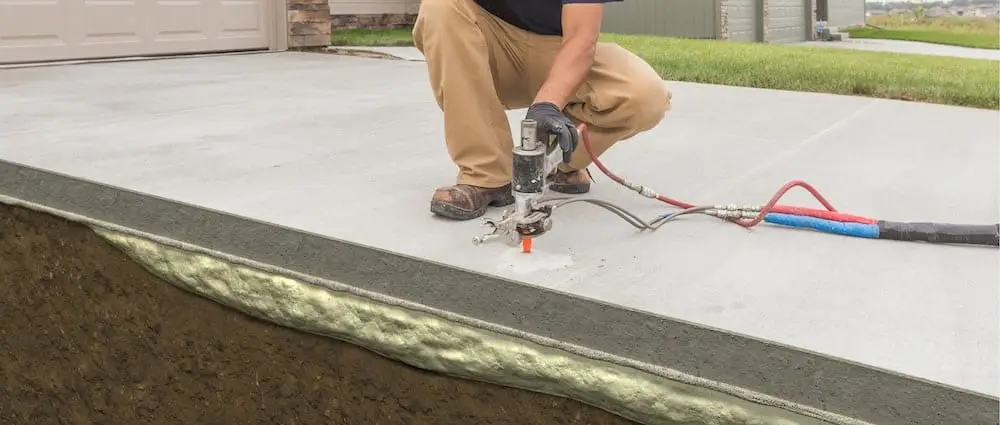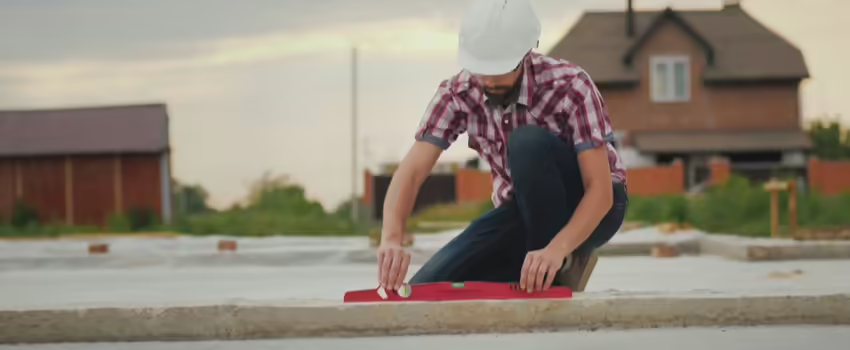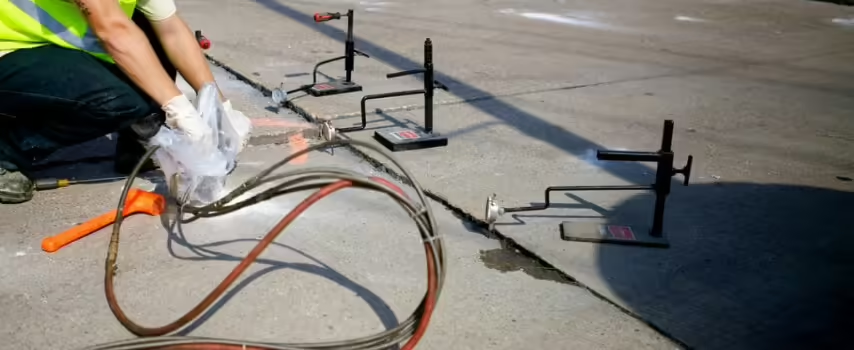Concrete foundations are made to last, but believe it or not, they’re not invincible. Over time, shifting soil, moisture problems, or plain old wear and tear can cause cracks, dips, or worse. But the good news is that repairing concrete early can save you from bigger problems down the road.
Here’s what usually goes wrong (and how we fix it).
Does Your Concrete Foundation Need Repair? Here’s How to Tell.
Before a foundation completely gives out, there are some pretty clear signs that something’s off:
- Cracks in interior or exterior walls
- Doors and windows sticking or no longer lining up
- Sloping or uneven floors
- Gaps around window frames or baseboards
- Visible cracks in the foundation itself
If you’ve spotted any of these at home or around your building, please don’t ignore them! Catching it early makes repairing concrete quicker, cheaper, and a whole lot less stressful.
Seeing signs like cracks or sloping floors? Book a free inspection with Leveled Concrete today.
What Causes Foundation Damage in the First Place?
Your foundation doesn’t break down for no reason. Here’s what’s usually behind it:
1. Soil Movement
Texas clay is tricky stuff. It swells when wet and shrinks when dry. You know what that means…constant movement under your foundation. That push and pull puts real stress on your slab and eventually causes it to crack or sink.
2. Poor Drainage
Water that hangs around the edges of your home doesn’t do your foundation any favors. It can soften the soil or wash it away altogether, leaving empty pockets under the slab.
3. Tree Roots
Big trees close to your home may look nice, but their roots can suck up moisture or push into your foundation. Either way, they’re trouble.
4. Construction Shortcuts
If your property wasn’t built with the right support or compacted soil, problems can show up sooner than you’d think.
Leveled Concrete Tip: Repairing concrete the right way means fixing the foundation soil or moisture problem that caused it, not just slapping on a patch.

Repairing Concrete: Proven Fixes That Work
No two repairs are the same. What works on one home might not cut it for another. But these are the go-to methods for most homes and buildings.
1. Foam Injection (Polyurethane Lifting)
Foundation foam injection is our #1 method and for good reason. It’s quick, it’s clean, and it gives results you can see the same day.
This one’s fast and surprisingly simple. We drill small holes into the slab and pump in a two-part foam that expands underneath. It fills empty pockets and lifts the slab back into place. Most jobs take just a few hours, and you can walk or drive on it soon after.
It doesn’t take heavy machinery, and we don’t tear up your yard. Polyurethane foam injection is clean, reliable, and strong enough to support cars, trucks, and everyday foot traffic.
Best for: Light to moderate settling, driveways, garage floors, sidewalks, and slab-on-grade homes
2. Pier Installation
Pier and beam repair is another strong option when the damage runs deeper. Some foundations need more than foam, they need steel support that reaches down to stable soil. That’s where piers come in.
If your foundation has dropped several inches or more, foam alone won’t do the trick. That’s when we bring in steel piers. These are driven deep into the ground until they hit solid, stable soil. Then, the foundation gets anchored to them, and we raise it back to where it belongs.
It’s a more involved process and might involve digging around the base of your home or building. But bet your bottom dollar, once those piers are in place, your structure isn’t going anywhere.
Best for: Major sinking or uneven foundations with long-term settling
3. Crack Sealing & Structural Epoxy
Do you have small cracks? Those can easily be sealed up with flexible material that keeps out water and dirt. For wider or deeper cracks, we inject epoxy that bonds the concrete together again.
This method is quick but powerful. (It’s often paired with foam or pier work to lock in the repair.)
Best for: Hairline fractures, vertical wall cracks, and moisture-related gaps
4. Drainage Corrections
If water keeps showing up where it shouldn’t, your foundation won’t stay stable for long. That’s why we often include drainage fixes with foundation repair. This might mean re-sloping the soil, installing French drains, or moving your downspouts so water flows away from the slab.
You can fix the slab, but if the water problem sticks around, it’s only a matter of time before the issues return.
Best for: Any foundation with signs of erosion, soft soil, or standing water
Not sure which repair fits your property? Get a no-obligation quote from Leveled Concrete.
When to Call the Experts
If your floors are tilting, building cracks keep getting bigger, or doors won’t stay shut, don’t wait it out. Problems like these don’t solve themselves. The earlier we get in, the more options you have (and the less we have to undo!)
We’ll figure out what’s going on under the surface and walk you through your repair options, no pressure.

Work With Leveled Concrete
We don’t mess around when it comes to concrete repair. At Leveled Concrete, we’ve fixed up homes, businesses, garages, and walkways all over Greater Houston. Our concrete leveling services are clean, fast, and built to last.
We’ll inspect your property, determine the problem, and get things fixed in no time.
What You Can Expect:
- Straightforward inspections
- Clear, honest quotes
- Repairs done right the first time
Call (832) 995-2000 or schedule your inspection online today. Repairing concrete foundation starts here!

